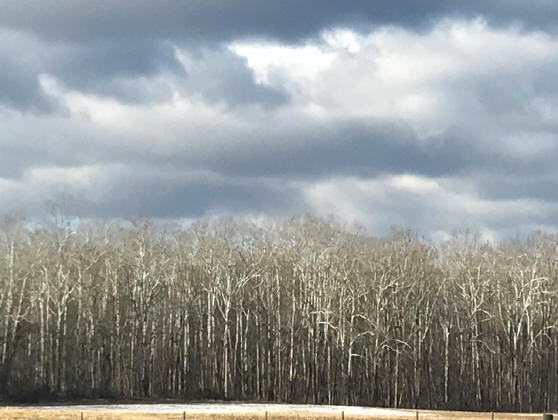|
For those who are looking….
Susie Hill
Frederick County Master Gardener

(12/31) I knew I had to go back to school to study horticulture when I was in my mid-twenties. Every day on my way to work I found myself looking out the windows at trees instead of watching the road. The Catoctin mountain forest was particularly enticing. Route 15 was a much quieter road then, and fortunately, there were no mobile phones to provide additional
distractions. Although I admired the landscape in general, there was one tree that stood out amongst the others: the sycamore. Against a blue daytime sky or a sunrise dancing with pink and purple hues, its white bark was remarkable. The shape of this towering tree with its dazzling bark and color contrast inspired me to leave a secure job in search of knowledge for the
things that ignited curiosity in me.
Our native sycamores (Plantanus occidentalis) are one of the easiest trees to pick out in a landscape and one that children can easily learn to identify. As a canopy tree, they stand tall in a landscape, growing to a height of 75-100 feet. A floodplain species, they are particularly noticeable near farm fields that may be lined or intersected by steams and creeks. At
the base, their bark is brown and rather indistinct. As the height of the tree increases, however, that brown bark begins to curl and fall off in sheets, leaving a smooth white bark that towers toward the sky. The smooth bark makes it impossible for climbing vines to reach into the top of the tree, leaving the shape of the branches to stand in silhouette against the sky.
This starkly white bark is what makes it easy to distinguish from other trees and the feature that makes it stunning in a winter landscape.

The white bark of native sycamore trees indicate the presence of water in a winter landscape.
Horticulturally speaking, it has both positive and negative features. Sycamores are particularly good at withstanding floods and stabilizing soil. They reduce erosion and slow water flow so that valuable nutrients are more likely to remain in the soil rather than being lost downstream. Sycamores thrive in wet bottomlands.
Despite their beautiful white bark, I am not advocating that one plant a sycamore in the front yard. The flowers are unremarkable and fall color is poor. They do get interesting looking seed-pods that look like ornaments during the winter, but the combination of those features would not be enough to make me want to plant one front and center in my yard. What I am
suggesting, is that you take a moment to notice them and appreciate them for their invaluable contribution to the beauty of the winter landscape.
Just as I enjoyed the sight of a sycamores in a winter landscape twenty five years ago, I still marvel when I look out my kitchen window and see their white bark against a backdrop of pine trees or I watch the sun rise over a swath of sycamores that line the creek. As gardeners, we tend to think of January as the quiet time of year. This may be accurate in terms of
getting a rest from back-breaking labor, but it does not apply to the nature of a gardener’s curiosity and the inspiration that is to be found outside in all four seasons. Now is the time to go for a brisk walk or look outside the windowpanes to see that although nature does rest, it never ceases to inspire curiosity and appreciation for those who are looking.
Read other articles about tree care
Read other articles by Susie Hill
|